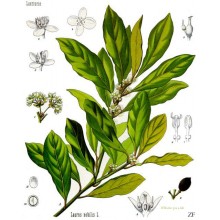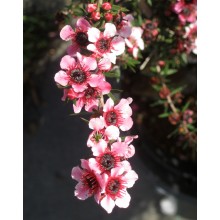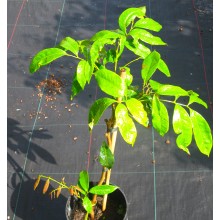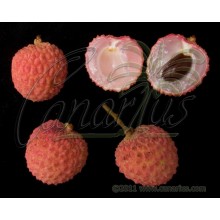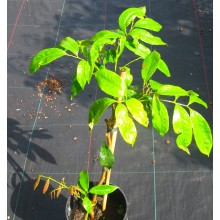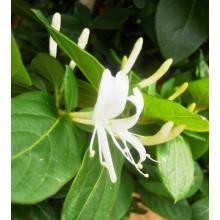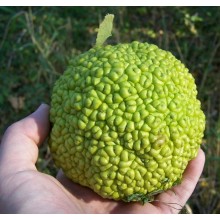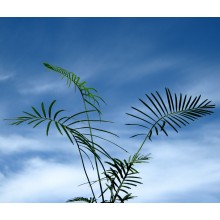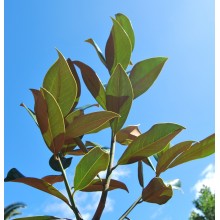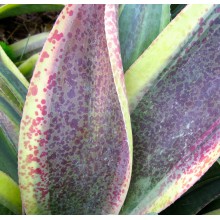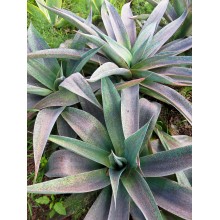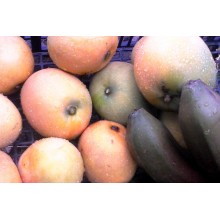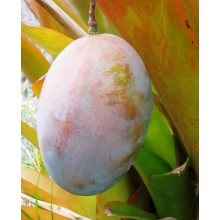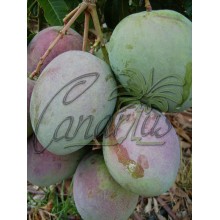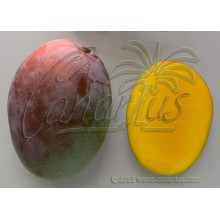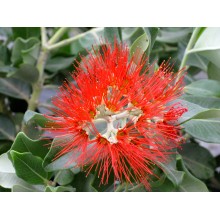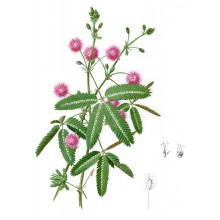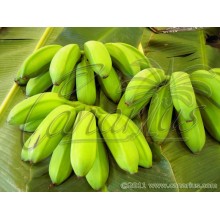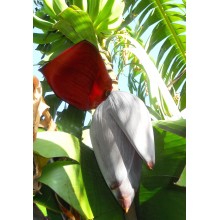Cold-Hardy Plants There are 309 products.

This is our selection of plants that can stand some cold. Some will only resist to cool weather and light frost, but some others will take hard frost in colder climates. They are all very different but they deserve to be tried because all these tropical-looking plants have non tropical requirements. They will surely thrive outdoors in coastal Mediterranean climates or in a mildly heated greenhouse where frost does not occur.
-
Leptospermum scoparium - Manuka Tea Tree
Leptospermum scoparium - Manuka Tea Tree
Elegant evergreen shrub with deep green fragrant leaves that bears small flowers of white to pink in colour. It is resistant to moderate frost. This plant is called Manuka and it is known for medicinal purposes but also because it makes a special bee honey. There are also reports of therapeutic properties.
19,80 € -
Litchi chinensis 'Calcutia'
Litchi chinensis 'Calcutia'
This well-known cultivar from India is late bearing and produces a rather large fruit, of about 22 g, with a deep red colour. It is a very good producer but it is (thankfully) not vigorous, so it stays rather low and wide.
56,40 € -
Litchi chinensis 'Fay Zee Siu'
Litchi chinensis 'Fay Zee Siu'
Litchi chinensis 'Fee Zee Sui' -Reddish fruit with green veneer, very heart-shaped, large size, high percentage of aborted seed, early-medium harvesting.
56,40 € -
Litchi chinensis 'Kwai Mai Pink'
Litchi chinensis 'Kwai Mai Pink'
The "cold-hardy" lychee tree. This Chinese lychee variety produces fruits in cooler locations and and fruits very late, in mid-summer. Fruits are greenish-pink and quality is very good.
66,40 € -
Lonicera japonica - White Honeysuckle
Lonicera japonica - White Honeysuckle
This white honeysuckle is a classic of all times. It is a fast growing, robust vine with sweet smelling white flowers. Thesea are developed in pairs and turn cream coloured as they age. It can be kept low as a shrub. It is also used medicinally, both by modern science and by traditional Chinese medicine.
21,60 € -
Maclura pomifera
Maclura pomifera
"Osage orange" is a deciduous tree from North America, producing unusual, large green fruits. These are unedible yet very exotic-looking and ornamental and resemble the fruits of the breadfruit tree.
23,40 € -
Macrozamia mountperriensis
Macrozamia mountperriensis
The size of this plant is: about 4 years old. 2-3 cm base, leaves about 40-60 cm tall. Mid-sized Macrozamia from a few locations by the coast in Central Queensland, close to "Mount Perry". Elegant arching glossy leaves.
42,00 € -
Mangave 'Espresso'
Mangave 'Espresso'
This is an extraordinary ornamental plant! Mangaves are intergeneric hybrids between Manfreda and Agave. Espresso is a variegated selection obtained from the already beautiful Mangave 'Macho Mocha'. It has a showy spineless rosette with blue leaves, spotted in burgundy, with white spotted margins.
32,00 € -
Mangave 'Macho Mocha'
Mangave 'Macho Mocha'
Too beautiful to be true: this blue leaved plant is spineless and loaded with exotic purple spots. It is an excellent natural hybrid between intergeneric hybrid between Manfreda variegata and Agave celsii. Potted plants will stay below 1 m in diameter but field-grown plants can attain almost 2 m ! It is really hardy to frost: it stood -13 C in North...
19,50 € -
Mangifera 'Gomera 1' - Hardy Canarian Mango
Mangifera 'Gomera 1' - Hardy Canarian Mango
Tall 16x30 cm pot - Gomera is a traditional Canarian strain of vigorous mango trees, producing rounded yellow fruits of small-medium size, with excellent flavour. This mango is hardier than most mango cultivars to drought and cold.
38,00 € -
Mangifera indica 'Keitt'
Mangifera indica 'Keitt'
Dwarf mango tree with huge purple-green juicy fruits of about 1 kg each. One of the most colourful of all. Bears late in season. Not really cold hardy, but being "dwarf" it can be easily protected in winter, grown in a greenhouse or trained on a wall.
52,30 € -
Mangifera indica 'Lippens'
Mangifera indica 'Lippens'
Fruits of Mango "Lippens" are medium sized but short in length. The skin is yellow-pink and the yellow flesh is soft with low presence of fibres. Ripens in mid season. The tree is small-sized and is recommended for cooler locations.
52,30 € -
Mangifera indica 'Osteen'
Mangifera indica 'Osteen'
Osteen is an average sized tree, very good in Mediterranean climates and so it is the leading mango cultivar in commercial orchards of Southern Spain. Purple skinned fruit, typically with a blue wax. Yellow, fibre-less flesh, small seed. Weight is 300-700
52,30 € -
Metrosideros collina cv. Spring Fire
Metrosideros collina cv. Spring Fire
Versatile shrub or small tree, with grey-green dende foliage and spectacular crimson pincushion flowers in spring and summer. It takes short frosts to about -5 C, drought, and harsh coastal conditions. This plant was selected in New Zealand from a plant wild-collected in Rarotonga, Polynesia and it was initially spread as Metrosideros thomasii.
38,00 € -
Mimosa pudica - Sensitive Plant
Mimosa pudica - Sensitive Plant
This species rocks! It is a creeping plant, with sensitive leaves that respond to touch, heat or wind. When you touch the leaves they quickly close for a few minutes. It is from tropical America and it loves a lot of sun and heat.
17,20 € -
Musa 'Dwarf Orinoco', 'Dwarf Topocho'
Musa 'Dwarf Orinoco', 'Dwarf Topocho'
This is a much shorter clone of the famous banana named Orinoco, Topocho or Bluggoe. Tolerant of wind, drought and cold. Fruits are very different from the common bananas from the supermarket, triangular or square in section - they can be eaten cooked or raw!
41,50 € -
Musa 'Orinoco', 'Topocho' - Banana Tree
Musa 'Orinoco', 'Topocho' - Banana Tree
This is the famous banana named Orinoco, Topocho or Bluggoe. Tolerant of wind, drought and cold. Fruits are very different from the common bananas from the supermarket.
42,50 €
At the moment there are few products in this category Cold-Hardy Plants
















